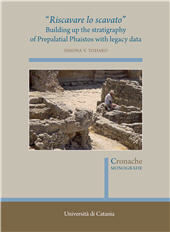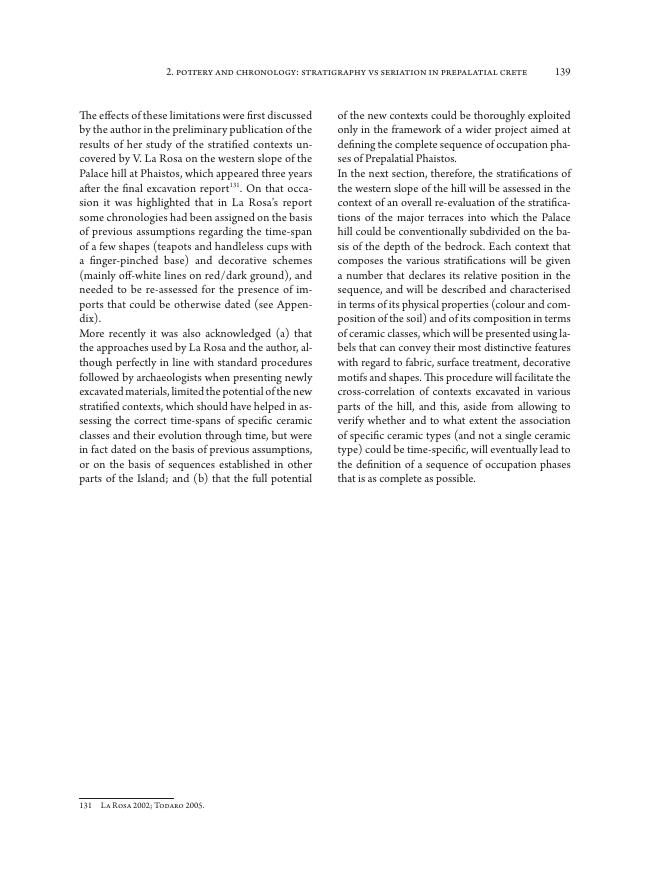Riscavare lo scavato : building the stratigraphy of prepalatial phaistos with lecacy data
275 p. : ill.
Includes bibliographical references and index.
In archaeological practice it is possible to encounter either single-phase sites or multi-phase sites. The latter allow continuity and change to be traced through the different phases of a site, but require far more investment in terms of time and energy, especially when the locus of activity occupied the same place through time. In these cases, previous phases can only be explored with small test-pits conducted under the floors of later structures, and therefore require methodologies that are specifically devised to minimize the risks caused by the high level of inference and subjectivity imposed by the partiality of the documentation that is accessible to the excavators. These sites, moreover, are often investigated over very long periods of time, with different methodologies of excavation and recording that create a large corpus of legacy data that necessitates a thorough re-assessment before being used.
This book focuses on Phaistos, a site located in Crete, and aims to establish the stratigraphic sequence of the site in the period that preceded the construction of a palace of Minoan type (a court-centred building) by using the data collected during three major excavation campaigns conducted between 1900-1909; between 1951 and 1966; and between 2000 and 2005. It is not the publication of the relative chronology of the site, i.e. of the pottery groups that define the various phases of the Early Bronze Age, as this is in the process of being completed under the auspices of the Italian Archaeological School in Athens; nor is it the publication of the results of the contextual re-assessment of the site, which has already been presented and discussed in a monograph length study, which challenged the old orthodoxy that Prepalatial Phaistos operated as a straightforward settlement that grew through the various phases of the Early Bronze Age to become a proto-urban centre.
This book has been written to clarify the methodology followed by the author in re-assessing the settlement history of Phaistos prior to the construction of the palace, a methodology that was based on the cross-correlation of more than 180 stratigraphies excavated during the past 100 years that had at its core V .La Rosa's excavation strategy, known as "Riscavare lo scavato". This excavation programme entailed the opening of new trenches near old ones, and thus linked past and present investigations providing the opportunity to see with new eyes stratifications that had been simply described and poorly illustrated by the previous excavators [Testo dell'editore].
Text in English.
-
Información
ISBN: 9788871409740
COLECCIÓN



